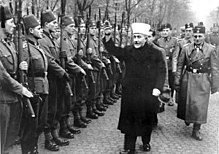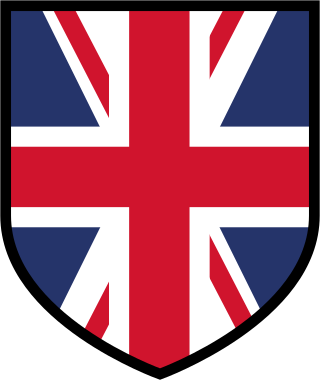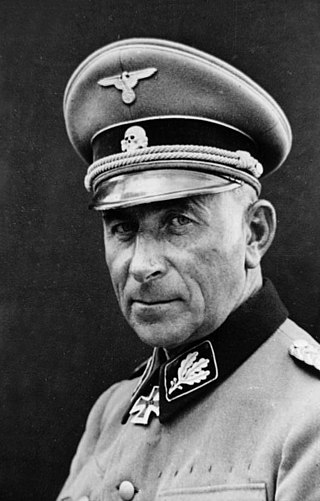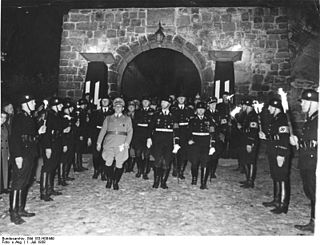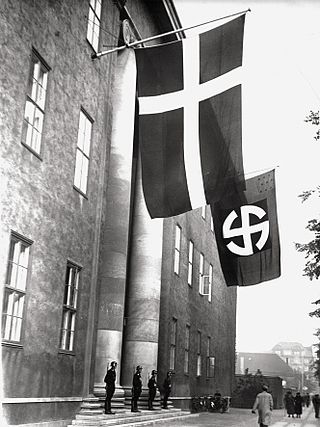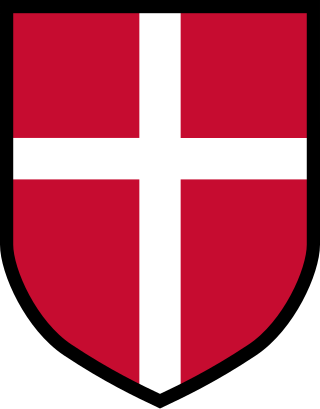| Designation | Formation | Personnel | Peak size | Notes |
|---|
| 1st SS Cossack Cavalry Division | November 1943 | Don, Cuban, Terek and Siberian Cossacks | n/a | United with 2nd Cossack Cavalry Division into the XV SS Cossack Cavalry Corps in 1945 |
| 2nd Cossack Cavalry Division | December 1944 | Don, Cuban and Terek Cossacks | n/a | United with 1st SS Cossack Cavalry Division into the XV SS Cossack Cavalry Corps |
| SS Regiment ‘Westland’ | June 1940 | Dutch volunteers and Belgian Flemings. | n/a | Absorbed in 5th SS Panzer Division Wiking in December 1940 |
| SS Regiment ‘Nordwest’ | April 1941 | Dutch (1,400), Belgian Flemings (805) and Danes (108) volunteers | 2,500 | Disbanded in September 1941. |
| 5th SS Panzer Division 'Wiking' | September 1940 | Dutch, Norwegian, Danish, Flemish, German, Swedish. [lower-alpha 5] | 19,377 | Formed by merging SS Regiment ‘Westland’ and 'Nordland'. Mostly Reich Germans and Volksdeutsche. |
| VI SS Army Corps (Latvian) | October 1943 | Latvian | 31,500 [lower-alpha 6] | Formed in October 1943 with the Latvian brigade and Waffen-SS divisions (1st Latvian and 2nd Latvian). |
| 7th SS Volunteer Mountain Division Prinz Eugen | March 1942 | Volksdeutsche (Ethnic Germans) from the Serbian Banat mostly but also Croatia, Hungary and Romania with some Reich German cadres | 20,624 | Germanic formation Volksdeutsche (92%) and Reich German In January 1945 absorbed the remnants of the 21st Waffen Mountain Division of the SS Skanderbeg (1st Albanian) as a battalion. |
| IX Waffen Mountain Corps of the SS (Croatian) | July 1944 | Albanian, Croatian, Bosnian Muslims. | n/a | Formed from 'Kama' (2,000 men) and 'Handschar' (10,000 men) as well as some German and Hungarian units. |
| 11th SS Volunteer Panzergrenadier Division 'Nordland' | March 1943 | Volksdeutsches from Romania and Reich Germans plus Danes, Norwegians, Dutches, Swedes and Belgian Flemings. | n/a | Formed from Wiking's 'Nordland' Regiment, mostly Volksdeutsche Balkan personnel. Also included Norwegians in SS-Volunteer-Panzer-Grenadier Regiment 23 "Norge" |
| 13th Waffen Mountain Division of the SS Handschar (1st Croatian) | March 1943 | Bosnian Muslims with some Catholic Croats, Albanian Muslims and German cadres. | 26,000 | First non-Germanic Waffen-SS division |
| SS-Waffen-Gebirgsjäger Battalion 13 | March 1943 | Albanian Muslims from Kosovo and Sanjak. | 1,340 | Part of SS Waffen Gebirgsjäger Regiment 2 under 13th Division of the SS Handschar |
| 14th Waffen Grenadier Division of the SS (1st Galician/Ukrainian) | July 1943 | Ukrainian volunteers | n/a | In November 1944, renamed 1st Ukrainian Division of the Ukrainian National Army" (1st UD UNA). [lower-alpha 7] |
| 15th Waffen Grenadier Division of the SS (1st Latvian) | May 1943 | Latvian conscripts | n/a | n/a |
| XV SS Cossack Cavalry Corps | December 1944 | Don, Cuban, Terek and Siberian Cossacks | n/a | Formed from the 1st and 2nd Cossack Cavalry Division, and the Cossack Plastun Brigade. |
| 19th Waffen Grenadier Division of the SS (2nd Latvian) | February 1944 | Latvian | n/a | |
| Latvian SS Volunteer Legion | February 1943 | Latvian | n/a | Merged to form the 15th Waffen Grenadier Division of the SS (1st Latvian). |
| 20th Waffen Grenadier Division of the SS (1st Estonian) | January 1944 | Estonians | n/a | Formed from the 3rd Estonian SS Volunteer Brigade, Wiking's Estonian "Narwa" Battalion |
| 3rd Estonian SS Volunteer Brigade | October 1943 | Estonians | 5,099 | Formed from the Estonian Legion, became the 20th Waffen Grenadier Division of the SS (1st Estonian) in 1944. |
| Estonian SS Legion | August 1942 | Estonians | n/a | Waffen-SS-organized, brigade size expanded into the 3rd Estonian SS Volunteer Brigade, followed by the 20th Division of the SS (1st Estonian) in 1944. |
| 21st Waffen Mountain Division of the SS Skanderbeg (1st Albanian) | May 1944 | Albanian Muslims (mostly Kosovo Gheg Albanians) with German, Austrian and Volksdeutsche cadres | 9,000 | Formed from volunteers supplied by the League of Prizren and the Albanian collaborationist government, as well as Croatian Ustaša militias and SS "Handschar" division Albanian personnel. Disbanded in November 1944 with some members joining ‘Prinz Eugen’. |
| 22nd SS Volunteer Cavalry Division Maria Theresia | n/a | Volksdeutsche from Hungary and Hungarians. | n/a | |
| 23rd SS Volunteer Panzer Grenadier Division 'Nederland' | February 1945 | Dutch | n/a | Formed from the 4th Volunteer Panzer Grenadier Brigade Nederland and SS Legion Nederland. Received number 23 after SS Kama was disbanded |
| 4th SS Panzer Grenadier Brigade Nederland | October 1943 | Dutch (40%), Reich Germans and Volksdeutsche. | 5,426 | Formed from Volunteer Legion Nederland upgraded to 23rd SS Volunteer Division Nederland on 10 February 1945. |
| 23rd Waffen Mountain Division of the SS Kama (2nd Croatian) | June 1944 | Bosnian Muslims, Croats and Volksdeutsche | n/a | n/a |
| 24th Waffen Mountain Division of the SS Karstjäger | August 1944 | Volksdeutsche from Yugoslavia and the South Tyrol | n/a | Downgraded to brigade in January 1945. |
| 25th Waffen Grenadier Division of the SS Hunyadi (1st Hungarian) | November 1944 | Hungarian volunteers and conscripts. | n/a | n/a |
| 26th Waffen Grenadier Division of the SS 'Hungaria' (2nd Hungarian) | November 1944 | Hungarian volunteers | n/a | n/a |
| 27th SS Volunteer Grenadier Division Langemarck (1st Flemish) | May 1943 | Belgian Flemish with a few Finnish volunteers | 2,022 | Formed from the Flemish Legion as SS Volunteer Assault Brigade Langemarck. |
| 28th SS Volunteer Grenadier Division 'Wallonia' | September 1944 | n/a | n/a | Formed when SS Assault Brigade Wallonia was raised to a division. |
| SS Volunteer Assault Brigade 'Wallonia' | n/a | Belgian Walloons | 1,850 | Formed when the Walloon Legion was admitted into the Waffen SS |
| 29th Waffen Grenadier Division of the SS RONA (1st Russian) | June 1944 | Russian | n/a | Formed from the Kaminski Brigade (RONA), became division in August 44, received number in August. |
| 29th Waffen Grenadier Division of the SS (1st Italian) | September 1944 | Italian | n/a | Established as Italian SS Volunteer Legion, then Waffen-Grenadier-Brigade der SS (ital. Nr. 1). Received number 29 after SS RONA was disbanded |
| 30th Waffen Grenadier Division of the SS (Russian No. 2) | Aug 1944 | Byelorussian, Russian, Ukrainian, Polish, Tartar with German officers. | n/a | Disbanded in December 1944 |
| 30th Waffen Grenadier Division of the SS (1st Belarusian) | Aug 1944 | Belarusian, Polish, Russian, and Ukrainian | 10,000 | Formed from Schutzmannschaft-Brigade Siegling personnel |
| 31st SS Volunteer Grenadier Division | January 1945 | Volksdeutsche from the Hungarian Bačka and Baranja region and members of the Arrow Cross. | 14,800 | Formed partially from remnants of the disbanded 23rd Mountain Division 'Kama'. |
| 33rd Waffen Grenadier Division of the SS Charlemagne | Feb 1945 | French | 7,340 | Formed from LVF, Brigade Frankreich and other French collaborators. |
| 33rd Waffen Cavalry Division of the SS (3rd Hungarian) | December 1944 | Hungarian volunteers | n/a | Absorbed in January 1945 by the 26th SS Panzer Grenadier Division (Ungarische # 2) |
| 34th SS Volunteer Grenadier Division 'Landstorm Nederland' | November 1944 | Dutch | n/a | Formed as Landstorm Nederland then in November 1944 integrated as SS Brigade 'Landstorm Nederland', upgraded to division in February 1945. |
| Indian Volunteer Legion of the Waffen-SS | August 1944 [110] | n/a | n/a | |
| 35th SS-Police Grenadier Division | February 1945 | n/a | n/a | Formed from police personnel, near the end of the war. |
| 36th Waffen Grenadier Division of the SS | February 1945 | Russian and Ukrainian volunteers | 4,000 | Formerly Dirlewanger Assault Brigade. |
| 37th SS Volunteer Cavalry Division Lützow | February 1945 | Hungarians, and Volksdeutsche from Hungary. | n/a | Attached to the 6th SS Panzer Army |
| SS Ski Jäger Battalion "Norwegen" | September 1942 | Norwegian | n/a | Part of the 6th SS Mountain Division Nord |
| Norwegian Legion | June 1941 | Norwegian | 1,218 | de facto incorporated into the Waffen- SS |
| SS Volunteer Sturmbrigade France | July 1943 | French | 1,688 | In September 1944 the Sturmbrigade brigade was amalgamated with the Legion of French Volunteers (L.V.F), which became the core of the SS Division Charlemagne. |
| Waffen Grenadier Regiment of the SS (1st Bulgarian) | n/a | n/a | n/a | n/a |
| SS-Freiwilligen Legion Flandern | September 1941 | Flemish | 875 | Formed from the Flemish Legion disbanded in May 1943 and reformed within the SS Assault Brigade Langemarck |
| Finnish Volunteer Battalion of the Waffen-SS | March 1941 | Finnish | 1,408 | disbanded in mid-1943 |
| Finnish SS-Company | 1944 | Formed of Finnish defectors, POWs and interned sailors. | 250 | Disbanded in May 1945 |
| 1st Hungarian SS-Ski Battalion | n/a | n/a | n/a | Formed of two battalions |
| SS-Brigade Ney | October 1944 | Hungarian volunteers | 3,100 | |
| SS Waffen Mountain Brigade (Tatar No. 1) | July 1944 | n/a | n/a | Formed from the SS Waffen Mountain Regiment (Tatar No. 1), |
| SS Waffen Mountain Regiment (Tatar No. 1) | n/a | n/a | n/a | Upgraded to SS Waffen Mountain Brigade (Tatar No. 1) in July 1944. |
| East Turkish Armed League of the SS | January 1944 | Turkmen, Azeri, Kyrgyz, Uzbeki and Tadjiki volunteers | n/a | Muslim SS division based in northern Italy, recruited in the Caucasus. |
| Waffen Grenadier Regiment of the SS (1st Romanian) | n/a | n/a | n/a | n/a |
| Waffen Grenadier Regiment of the SS (2nd Romanian) | n/a | n/a | n/a | n/a |
| Spanische-Freiwilligen-Kompanie der SS 101 | September 1944 | Spaniard | 240 | Merged into 28th SS Volunteer Grenadier Division Wallonien. |
| Spanische-Freiwilligen-Kompanie der SS 102 | January 1944 | Spaniard | n/a | |
|

